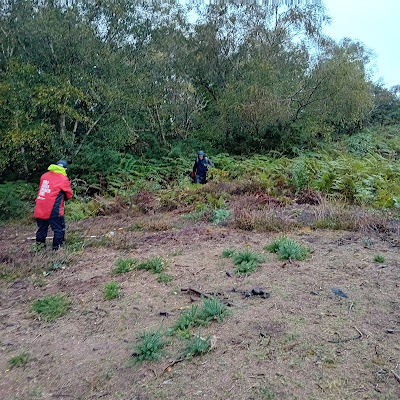 |
| Presentation of the bumblebee tile at the Wirral Farmers Market |
The white-tailed bumble bee tile is dedicated to Wirral Farmers’ Market who have helped the park in so many ways over many years. The market helped via its Community Grant Fund in sponsoring the construction of composting bins in 2005. The bins have been repaired and the number of bays doubled and are still being used to produce a source of soil improver for allotment holders.
 |
| Anne Benson, chair of Wirral Farmers' Market, with the new compost bins in 2005 |
In 2014 the market sponsored 500 bluebell bulbs which were planted under the hazel in Brick Pit Coppice and most recently sponsored the Silver Jubilee gates. They also provide the essential gazebos and tables for our opening days as well as the tombola drum. The current Chair of Wirral Farmer’s market, Steve Niblock, helped the park with the layout of the 2006 promotional leaflet and with council funding of various projects including the brown tourist sign on the junction of Howell and Bebington Road.
 |
| Bluebell planting at Brick Pit Coppice in November 2014 |
The next Wirral Farmer’s Market is on Saturday 13th April, 9am - 12 noon, where many items of quality food can be purchased, and profits made are ploughed back into the New Ferry area. New Ferry Butterfly Park will have a stall sowing seeds into freshly prepared newspaper pots made by your own hand to take away in a window ledge micro-propagator. It is a chance to pick up our new leaflets to distribute to friends and family and purchase some of our greeting cards based on the tile designs.
 |
| The Butterfly Park stall at Wirral Farmers' Market, sowing seeds |
Simon, treasurer of Wirral’s Farmers Market is pictured above with the tile dedicated to the market, alongside the greeting card based on the tile with the dedication written on the back. Simon and his family helped with the planting of the bluebell bulbs back in 2014. The white-tailed bumble bee is distinctive in appearance. It has a black body, a pale-yellow collar, a yellow band on the second abdominal segment and, of course their white tail. The bees emerge early in spring and can be seen feeding on flowers right through to August. They nest underground in old rodent burrows, crevices in brickwork or bases of hedgerows. Colonies can reach up to 200 workers but in the autumn only the new queen hibernates to start the cycle anew in the spring.



















